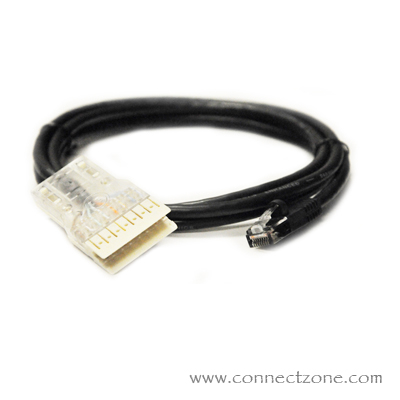We use cookies to make your experience better. Read more

Google+ vs. Facebook: 6 Things Google+ Has That Facebook Doesn't
Google is gunning for Facebook. The search giant recently launched Google+, a social networking site that aims to rectify the company's failed social media efforts, such as Google Buzz and Wave, and put a dent in Facebook's business. So does Google+ stand a chance against Facebook, which is now over 750 million users strong and has been valued at $100 billion? Google isn't giving up without a fight: the behemoth needs a hit in the social space and one Google executive called Google+ a bet-the-company effort. To help you decide, here's a look at six features Google+ has that Facebook doesn't (You can see what they have in common here).
1. Hangouts: Video Chat With A Group
One key element distinguishing Google+ from Facebook is a feature called "Hangouts" that offers users a way to join group video chats. Picture a chat room, but with video: Any user can create a Hangout, which is then open to others to join. Users can send messages during the Hangout, as well as watch YouTube videos as a group. Though Facebook recently launched video calling powered by Skype, it does not offer a free way to create group video chats--one-on-one video chats are the default. PC World calls the tool "one interesting feature that could really put Google+ ahead of Facebook."
2. Sparks: Get The News (Not The News Feed)
Google+ comes with "Sparks," a basic news reader offering users access to separate news feeds covering a variety of different topics. Google+ members can customize what interests appear on their Sparks page, which is directly accessible from their Google+ profile. Clicking on one of the topic--say "soccer," or "fashion"--in the Sparks page delivers a stream of stories from around the web, presenting the headline and first several sentences of articles from outlets such as New York Magazine, The Next Web, and YouTube. What differentiates Sparks from the Facebook news feed is its focus on specific topics and on news: you won't find information on your friend's newborn, but you will find highlights from blogs, newspapers, and other media outlets sorted by topic.
3. Keep Your Social Circles Secret
When Google+ users sort their friends, acquaintances and other contacts into Circles, no one else knows how they've been grouped. Google will show other Google+ users who you've put into your Circles, as well as who has put you into their Circles, but it won't reveal how you've characterized those Circles--who else in them, how they're titled, etc. For each post on Google+, users can specify, via a convenient drop-down menu, what Circles can see the content. Facebook Groups operate a bit differently. Though there are different privacy settings ("open," "closed," and "secret"), the bottom line is that all the members of the group will be able to see all the other members of that group, as well as the type of group they've been added to. The members of an individuals' Circle are visible only to the invidual who created it. In addition, Facebook uses Lists, not Groups, to help users restrict the audience that can view status updates and other posts. But Lists remain an imperfect solution, requiring extra steps for users, who have to click through several screens to specify what "list" to share with, and setting up Lists isn't quite as seamless as on Google+. The New York Times' David Pogue observes, "Facebook has something similar, called Lists. But compared with Circles, it's buried and a lot more effort to use."
4. See What Strangers Are Saying
Whereas on Facebook the only posts and status updates that appear in your news feed come from people you're friends with, Google+ allows you to see updates from people you aren't yet following, but who are following you. The "Incoming" stream displays posts from other Google+ users who have put you into their Circles, but you have not yet "circled." You can follow them if you choose by putting them into one of your circles.
5. Hang Out With People You Don't Know
Facebook Chat requires you to be friends with someone before you can chat with them. Google Hangouts, for better or for worse, are much more open: up to ten people can join a Hangout video chat, and they need not be in each others' Circles to do so. If you've "circled" someone, but she hasn't put you in one of her Circles, you can still join a Hangout she creates.
6. Get To It From Gmail (Or Google.com)
Via its social graph, Facebook has spread far beyond its Facebook.com domain. Facebook "like" buttons populate a slew of news sites, your Facebook friends' activity appears on numerous third-party sites, and more and more of the information you see is customized based on your Facebook profile and personal interests. Facebook follows people around the web, encouraging them to constantly engage with and click back to its site, but Google+ has its own advantage: it's embedded directly into Gmail, valuable real estate that users navigate to repeatedly each day. Every interaction with their email inbox presents an opportunity for them to log on to Google+--with a single click, users can go from their inbox to their social network. Google+'s integration with Gmail also provides an easy way to populate the social network. Embedded in the black header that now appears on Google.com, Google+ also follows people as they browse the search engine. In other words, Google has found a way to immediately put Google+ in front of users multiple times a day. Follow me on Twitter and Facebook.
0 Comment(s)






